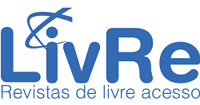CAIXAS DE LEITE DE DIFERENTES TIPOS: ENSINANDO VOLUME E ÁREA DE SUPERFÍCIE DE UM PRISMA POR MEIO DE RESOLUÇÃO DE PROBLEMAS
DOI:
https://doi.org/10.33871/22385800.2023.12.27.526-544Palavras-chave:
Resolução de problemas. , Aprendizagem com compreensão. , Grandezas e medidas. , Prática Educativa.Resumo
O objetivo deste estudo é relatar uma experiência desenvolvida por meio da metodologia de Ensino-Aprendizagem-Avaliação de Matemática através da Resolução de Problemas, de modo a possibilitar o desenvolvimento de uma aprendizagem com compreensão da Matemática em uma prática que envolve o cálculo de medidas de volume e superfície de um prisma, com estudantes do 7° ano do Ensino Fundamental. Ela fez parte de uma pesquisa de mestrado, de modo que foi realizada uma análise qualitativa, com base na observação participante e no diário de campo da professora pesquisadora, registros escritos dos estudantes com a resolução da atividade, seus depoimentos e registros feitos por meio de gravações de áudio e fotografias. Os resultados mostraram que a resolução do problema apresentado por meio dessa metodologia possibilitou que os estudantes compreendessem melhor os conceitos de capacidade, volume e área de superfície de prismas e analisassem qual das formas seria mais vantajosa (lucrativa) considerando apenas a matéria prima utilizada. Além disso, contribuiu para o desenvolvimento da criatividade dos estudantes e, propiciou que a professora pesquisadora analisasse as estratégias de resolução dos estudantes durante o processo e verificasse a compreensão dos conceitos envolvidos e sua importância para essa situação prática.
Downloads
Referências
ALLEVATO, N. S. G.; ONUCHIC, L. de la R. Ensino-Aprendizagem-Avaliação de Matemática: por que Através da Resolução de Problemas? In: ONUCHIC, L. de la R. et al. (org.). Resolução de Problemas: Teoria e Prática. Jundiaí: Paco, 2021 (ebook). p. 40-63.
BICER, A. A systematic literature review: Discipline-specific and general instructional practices fostering the mathematical creativity of students. International Journal of Education in Mathematics, Science, and Technology, v. 9, n. 2, p. 252-281, 2021. Disponível em: https://doi.org/10.46328/ijemst.1254. Acesso em: 20 abr. 2023
BRASIL. Base Nacional Comum Curricular - BNCC. Brasília: MEC/CONSED/UNDIME, 2018, versão completa. Disponível em: http://basenacionalcomum.mec.gov.br/images/BNCC_EI_EF_110518_versaofinal_site.pdf. Acesso em: 20 abr. 2023.
CARDOZO, D., POSSAMAI, J. P. As dimensões do making sense: a compreensão de funções exponenciais a partir de uma atividade investigativa. Acta Scientiae, Canoas, vol 21, n. 4, p. 2-19, jul/ago 2019. Disponível em: http://funes.uniandes.edu.co/28583/1/Cardozo2019The.pdf . Acesso em: 20 abr. 2021.
GONTIJO, C. H.; et al. Criatividade em Matemática: conceitos, metodologias e avaliação. Brasília: Editora Universidade de Brasília, 2019.
GRANDO, R.C. Recursos Didáticos na Educação Matemática: jogos e materiais
manipulativos. Revista Eletrônica Debates em Educação Científica e Tecnológica, v. 05,
n. 02, p. 393-416, Outubro, 2015. Disponível em: https://ojs.ifes.edu.br/index.php/dect/article/view/117. Acesso em: 16 nov. 2022.
HOFFMANN, L. C. J.; SILVA, V. C. da. Práticas de Ensino sobre Grandezas e Medidas
nos anos finais do Ensino Fundamental: a potencialidade do uso da Sala Ambiente.
Produto Educacional (Mestrado em Ensino de Ciências Naturais e Matemática) – Programa
de Pós-Graduação em Ensino de Ciências Naturais e Matemática, Universidade Regional de
Blumenau, Blumenau. 2022. Disponível em: furb.br/bibliotecadigital. Acesso em: 10 nov. 2022.
ONUCHIC, L. R.; ALLEVATO, N. S. G. Pesquisa em Resolução de Problema: caminhos, avanços e novas perspectivas. Bolema. Boletim de Educação Matemática. UNESP. Rio Claro, v. 25, p. 73-98, 2011. Disponível em: https://repositorio.unesp.br/handle/11449/72994. Acesso em: 15 jun. 2021.
ONUCHIC, L. R.; MORAIS, R. S. Resolução de problemas na formação inicial de professores de Matemática. Educação Matemática Pesquisa. São Paulo, v.15, n.3, p.671-691, 2013. Disponível em: https://revistas.pucsp.br/index.php/emp/article/view/16951 . Acesso em: 20 jun. 2021.
SILVER, Edward A. Fostering creativity through instruction rich in mathematical problem solving and problem posing. ZDM: the international journal on mathematics education. p. 75-80, January 1994
TRIPP, D. Pesquisa-ação: uma introdução metodológica. Educação e Pesquisa, São Paulo, v. 31, n. 3, p. 443-466, set./dez. 2005. Disponível em: http://www.scielo.br/pdf/ep/v31n3/a09v31n3.pdf. Acesso em: 11 nov. 2020.
VAN DE WALLE, J. A. Matemática no ensino fundamental: formação de professores e aplicação em sala de aula. Tradução: Paulo Henrique Colonese. 6.ed. Porto Alegre: Penso, 2009.
VAN DE WALLE, J. A. Teaching Mathematics for Understanding. In: VAN DE WALLE, J. A; KARP, K.; WILLIAMS, J. M. B.; LOVIN L. Teaching Student-Centered Mathematics. Person, 2014, p. 1-12.
VIGOTSKI, L. S. A construção do pensamento e da linguagem. São Paulo: Martins
Fontes, 2001.
Downloads
Publicado
Como Citar
Edição
Seção
Licença
Copyright (c) 2023 Revista Paranaense de Educação Matemática

Este trabalho está licenciado sob uma licença Creative Commons Attribution-NonCommercial-NoDerivatives 4.0 International License.










